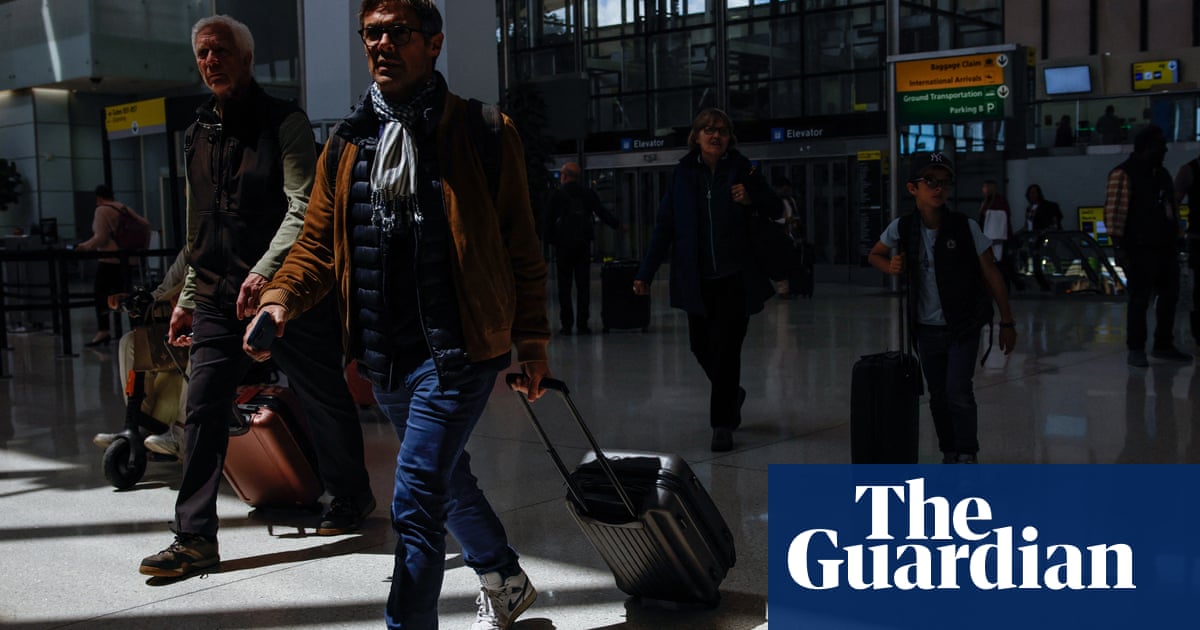The Federal Aviation Administration (FAA) said on Wednesday that it was taking immediate steps to address ongoing problems that have disrupted hundreds of flights at the Newark Liberty international airport, one of the US’s busiest hubs, which servesNew York Cityand the surrounding region.
The FAA said it was increasing air traffic controller staffing, adding three new high-bandwidth telecommunications connections and deploying a temporary backup system to thePhiladelphiaTerminal Radar Approach Control, which is handling Newark traffic during the switch to a more reliable fiber-optic network.
It also said it had capped the maximum arrival rate at Newark for the “foreseeable future” and may temporarily lower it further to ensure safety based on staffing, weather or equipment issues.
At the same time, Scott Kirby, chief executive ofUnited Airlines, has told employees that flights in and out of Newark “are absolutely safe” despite revelations of a recent tower communications outage than left air traffic controllers unable to communicate with or see incoming planes.
Kirby told employees by email that pilots follow procedures “to re-establish communication if controllers lose radio contact to navigate the airplane safely”.
The outage last week meant air traffic controllers guiding planes bound for New Jersey’s largest airport lost radar and radio communication for 90 seconds. Following the incident, multiple employees were placed on trauma leave, according to reports.
An air traffic controller, who was on duty that day, 28 April,told CNNthat the outage “was the most dangerous situation you could have”. The dropout in communications was blamed on the Philadelphia air traffic control facility where a single unsheathed copper wire shorted out equipment.
CNN’s transport correspondent, Peter Muntean, alsoreported on Xthat Newark air traffic controllers “lost the ability to communicate” with a FedEx flight in November. He said an approach controller told him “it was by the grace of God” that there wasn’t a midair collision.
On Monday, the airport saw the cancellation of at least 140 flights as well as the delay of hundreds of others, with travelers facing four-hour delays on average.Bloomberg reportedthat some travelers were avoiding the Newark airport.
Newark is a major hub for United’s international departures and a primary gateway for domestic flights, but a shortage of airport workers, dated technology and runway repairs has complicated efforts to restore smooth flight services.
United said it had historically flown 440 flights daily out of Newark, but after cutting flights earlier this spring due to the runway construction and the latest cuts, it is now down to 293 after it announced the cancellation of 35 domestic routes out of the airport on Monday.
But problems at Newark are not only affecting United. More than 580 flights were cancelled or delayed on Monday, and 624 flights on Sunday, according toFlightAware. More than 520 were affected on Tuesday.
On Wednesday, Newark led the nation in cancellations with 41 canceled departures and 43 canceled arrivals, according to the flight tracking service.
“This particular air traffic control facility has been chronically understaffed for years and without these controllers, it’s now clear – and the FAA tells us – that Newark airport cannot handle the number of planes that are scheduled to operate there in the weeks and months ahead,” Kirby wrote.
Kirby said it was “disappointing” to make further cuts to an already reduced schedule at Newark, but the airline’s leadership “feels like there is no other choice in order to protect our customers”.
The FAA says it plans to hire 2,000 new controllers this year, offering bonuses and a 30% pay rise to boost enrollment.
Later this week, the US transportation secretary, Sean Duffy, plans to release a schedule for upgrading the US’s ageing air traffic control systems – a plan that was accelerated after a midair collision near Washington DC in January that killed 67.
Duffy has said flying remains the safest way to travel because of existing precautions, but Newark’s problems underscore the need for upgrades. “We are on it. We are going to fix it. We are going to build a brand-new system for all of you and your families and the American people,” the transportation secretary said on Wednesday.
Duffy added: “We’ve slowed down the traffic. Safety is our mission. We love efficiency, but safety is critical for us. And so, if we feel like there’s issues in the airspace, we’ll slow it down. We’re looking at bringing in all of the airlines that serve Newark and having all of them with all of us have a conversation about how do we manage the flights out of Newark.”
On Monday, the Senate’s top Democrat called for an investigation into the crisis before similar things happened at other airports in the US.Chuck Schumer, who is from New York, said: “The chaos at Newark very well could be a harbinger if issues like these aren’t fixed, and if the FAA can’t get real solutions off the ground.”
Reuters contributed toreporting
